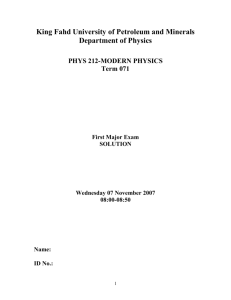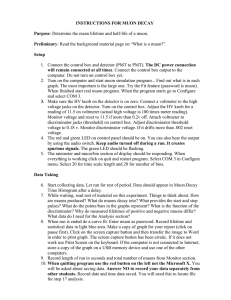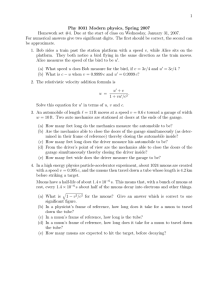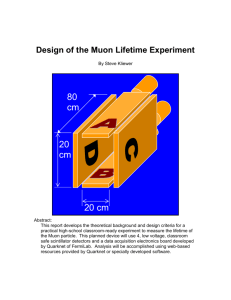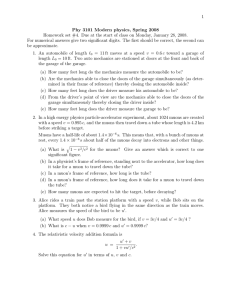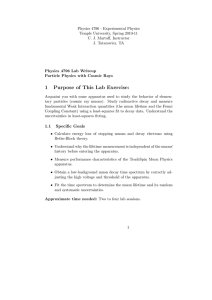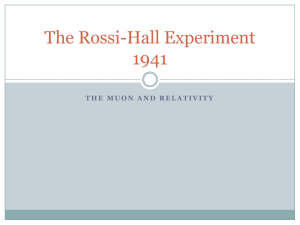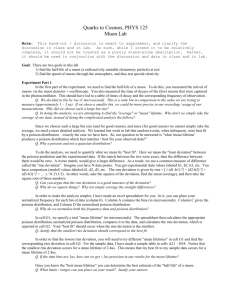Muon Decay Experiment
advertisement
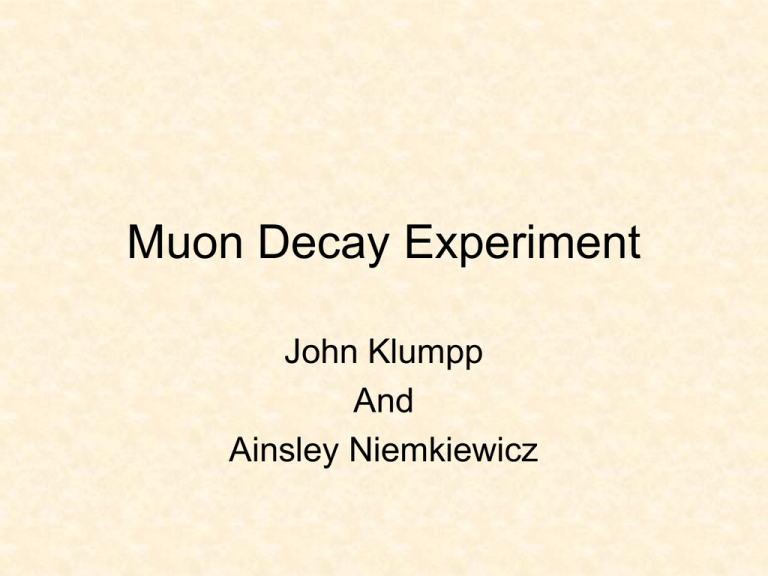
Muon Decay Experiment John Klumpp And Ainsley Niemkiewicz What Are Muons? • Fundamental particles • Carry charge of +/- 1 • Essentially heavy electrons • Inherently unstable • Decay into electrons and neutrinos e e Where Do They Come From? • Cosmic rays collide with matter in the upper atmosphere • Many fundamental particles produced • Only muons make it to the surface. Why? -High mass -Time dilation What Does Relativity Have To Do With It? • • • • Muons only survive about 2.2μs in lab frame 2.2μs * Speed of Light = .66 meters But the muons are not in the lab frame From the lab frame their clocks run slower, so they live longer • From the muon’s reference frame the distance is shorter • Measuring lifetimes confirms theory of relativity How Do We Detect Them? • Muons captured in scintillation detector • Flash of light produced when muons are stopped How Do We Measure Lifetime? • Another flash of light is produced by detector when muon decays • Time between capture flash and decay flash is the muon lifetime How Do We Calculate Mean Lifetime • Muons decay randomly, so many samples are needed • Collect samples for 48 hours • Fit data to exponential decay equation Data • Calibration 40 channels = 1.28 μs • Compress data from 512 channels to 64 channels. This helps MatLab’s Gaussian approximation work better • 10 channels = 1.28 μs • Trial 1 (48 hour trial): F(x) = 172.9e-x/71.41 + 16.19 channels • Trial 2 (12 hour trial): F(x) = 109.4e-x/74.37 + 9.655 channels Fit Curve Where’s The Mean Lifetime? • The exponential decay equation is x / b f(x) ae c • In this equation, b is the average lifetime. • In trial 1, b = 71.41 channels*1.28µs/40 channels = 2.38±0.13µs • Similarly, in trial 2, b = 74.37*1.28/40 = 2.29±0.13µs Sources of Uncertainty • • • • Background radiation Some muons don’t decay Some decays may not be detected Deletion of first fifteen channels Conclusion • Simple, accurate experiment • Demonstrates random nature of particle decay • Confirms relativistic time dilation
